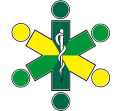BME Health Inequalities
The 2011 Census and 2017 NHS Digital Data
The Census report (2011) and NHS Digital 2017 report a number of health inequalities BAME people face, these include:
- Pakistani and Bangladeshi women reported illness rates that were 10% higher than those of white women consistently through three census periods (1991,2001,2011)
- The White Gypsy and Irish Traveller groups report particularly poor health, both men and women have twice the White British rates for limiting long term illness
- Chinese people reported consistently better health outcomes in 1991, 2001 and 2011 Census compared to other groups
- The Pakistani, Bangladeshi. Black Caribbean, White Irish and other Black census groups have worse health outcomes than the White British group for both men and women.
- Death rates from coronary heart disease amongst first generation South Asian adults are approximately 50% higher than the England and Wales average
- White women are up to 2.5 times more likely to be affected by osteoporosis and white men have been found more likely than black men to develop this condition
- The death rate from strokes among adults born in the Caribbean is more than 50% higher than the England and Wales average
- Perinatal mortality among Pakistani born mothers is nearly twice the national UK average
- Most South Asian groups have low incidence of lung cancer
- Malignant melanoma mainly affects white people
- Infant mortality for gypsy/traveller communities is 5 times the national average
- High hospitalisation rates for schizophrenic disorder amongst Afro-Caribbean population have been a constant research finding for many years
- Women born in India and East Africa have a much higher suicide rate than those born in England and Wales.
- Type 2 diabetes is up to six times more common in South Asian people and up to 3 times more likely to African and African-Caribbean people
- 69%, adults from the Black ethnic group are likely to be overweight or obese, more than twice as likely to be overweight or obese as adults in the Chinese ethnic group (32%)
- White British adults (16+) were more likely to drink at hazardous levels, harmful or dependent compared with all other ethnic groups. 30.8% of White British men, compared with 18.4% of men from Other White backgrounds, 6.6% of Black men, 4.7% of Asian men and 12.9% of men from Other or Mixed ethnic backgrounds
- 25% of men in the ‘Mixed’ ethnic group smoke, while only 3% of Asian women smoke
- Over 50% of people in the Bangladeshi and Pakistani ethnic groups lived in the most deprived 20% of areas in England in 2011. There is a 9 year gap in male life expectancy between the most and least deprived areas of England, and a 7 year gap for females.
Sources
https://www.ethnicity-facts-figures.service.gov.uk/health
Considerations relating to faith can include:
- Buddhists and Hindus may refuse some drugs that are believed to inhibit clarity of mind
- Circumcision is primarily carried out for religious or cultural reasons. Female circumcision is illegal in the UK and must be reported by Ambulance staff
- Hinduism classifies disease into two categories, those that can be effectively treated and cured, or those that cannot. It further classifies untreatable diseases as those which can be managed for an acceptable quality of life, such as diabetes, and those which cannot, such as terminal cancer. If treatment cannot provide the patient a quality life, then it is considered better to give no treatment beyond palliative measures
- Some religions believe that suffering is part of life and leads to a better state of existence – for them, cutting suffering short means interfering with progress towards liberation/salvation/atoneme
- Jehovah’s witnesses may refuse transfused, or stored blood– the collection of blood may also be refused by followers of this faith– this must be respected though communication of risk involved is imperative.
